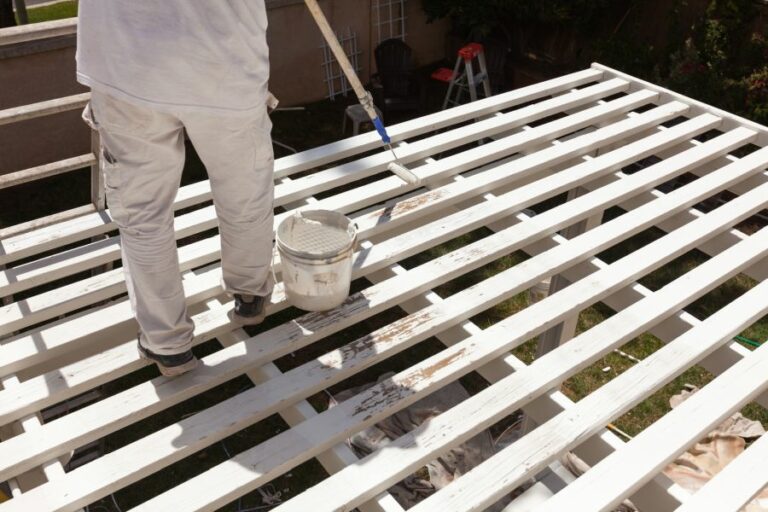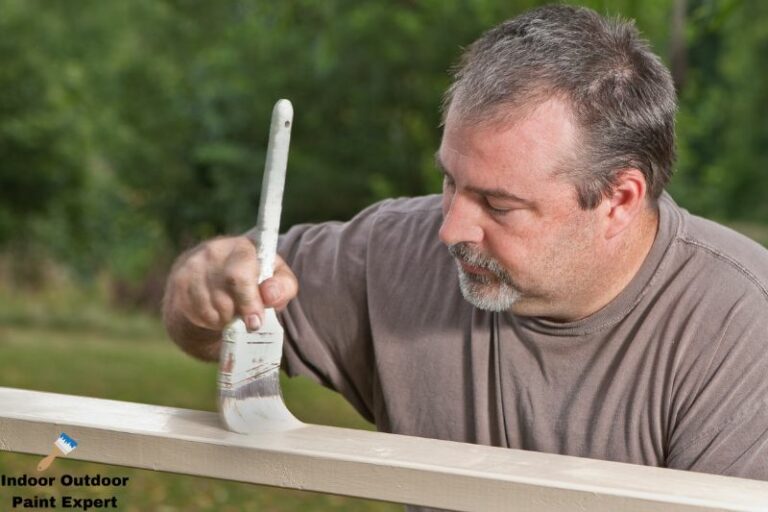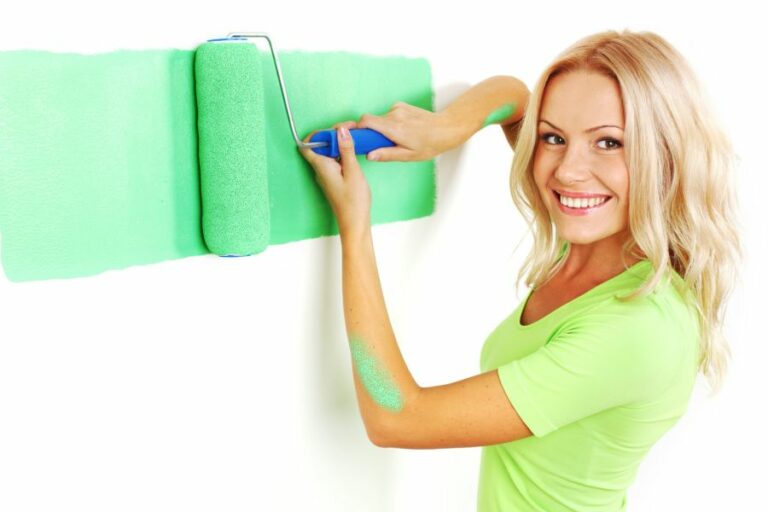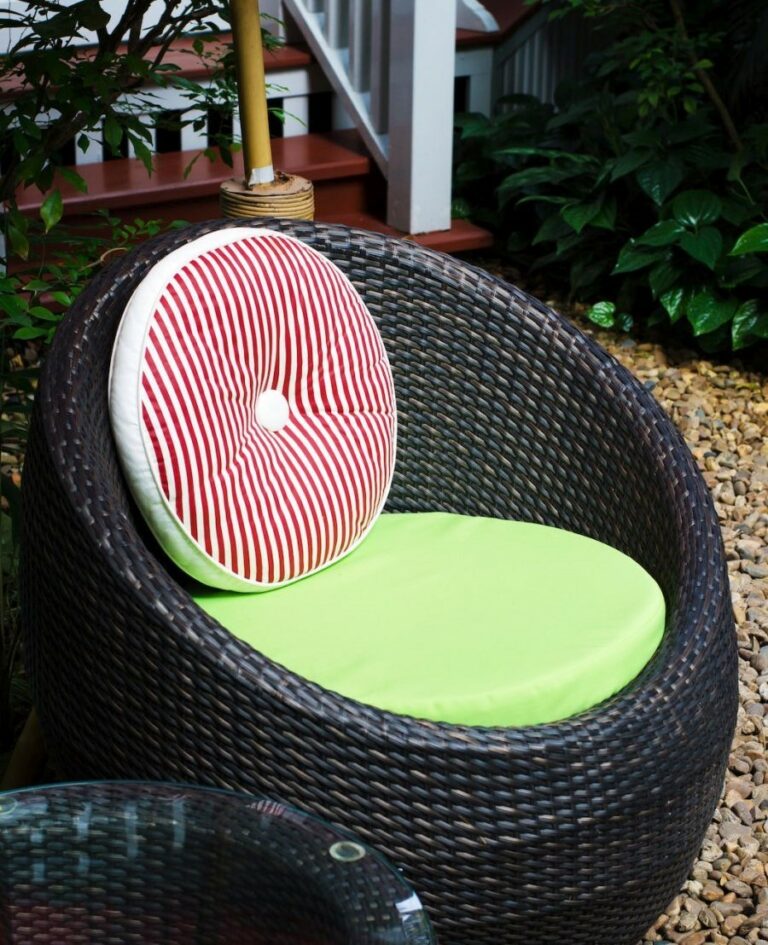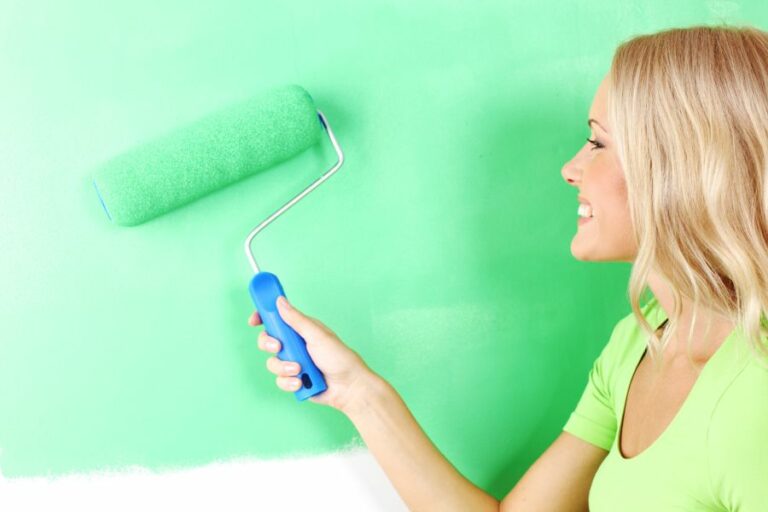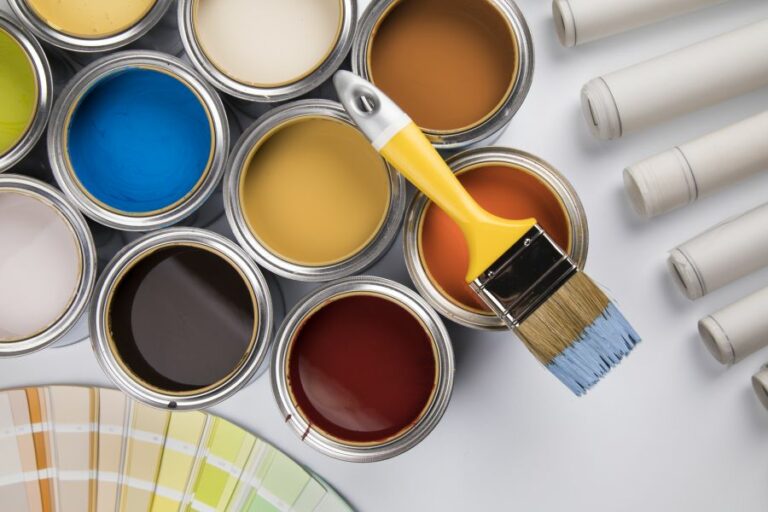Waterproof Outdoor Spray Paint, 25 Things You Should Know
Are you tired of your outdoor art projects and furniture fading or chipping due to harsh weather conditions? Do you want to bring new life to your space without worrying about constant maintenance? Look no further, as we have the perfect solution for you: waterproof outdoor spray paint!
Waterproof outdoor spray paint:
Waterproof outdoor spray paint is a durable and reliable solution for protecting various surfaces from harsh weather elements, such as moisture and UV rays. It adheres well to wood, metal, plastic, concrete, and more, offering a long-lasting, robust finish with its quick-drying formula and rust, corrosion, and UV-resistant properties. Popular brands of waterproof spray paint include Rust-Oleum, Krylon, and Montana.

Looking for the perfect waterproof outdoor spray paint to withstand harsh weather and protect your creative projects? Dive in as we unveil the top-performing products, expert tips, and creative ideas to bring your outdoor masterpieces to life. Read on for a colorful adventure!
Contents
- 1 Durable Waterproof Spray Paint for Outdoor Use
- 2 Does outdoor spray paint possess waterproof properties?
- 3 What is the Most Effective Paint for Exterior Wet Zones?
- 4 Does Krylon Spray Paint Possess Waterproof Properties?
- 5 Is Rust-Oleum Spray Resistant to Water Exposure?
- 6 Which Type of Spray Paint is Suitable for Outdoor Use?
Durable Waterproof Spray Paint for Outdoor Use
Outdoor projects often require an extra layer of protection to combat the harsh elements of weather, and using waterproof outdoor spray paint is the perfect solution. Whether it’s for a DIY project, patio furniture, or exterior decorations, having a durable and reliable waterproof spray paint is essential. In this comprehensive guide, we will explore the features, advantages, and tips on choosing and using the best waterproof outdoor spray paint for your needs.
• What Makes Spray Paint Waterproof?
A quality waterproof spray paint will have specific features and additives that ensure the paint adheres correctly and provides a robust barrier against moisture, UV rays, and other external factors. These may include:
- A quick-drying formula that prevents the paint from absorbing water, resulting in a long-lasting and robust finish.
- UV-resistant additives protect against fading and color changes, ensuring that your project maintains its appearance over time.
- Rust and corrosion-resistant properties, preventing metal surfaces from deteriorating due to exposure to water and harsh weather conditions.
- Cured paint that is flexible, allowing it to expand and contract with temperature changes, preventing cracks or peeling off.
Some popular brands known for producing high-quality waterproof outdoor spray paint include Rust-Oleum, Krylon, and Montana.
• Advantages of Using Waterproof Outdoor Spray Paint
There are several benefits to using waterproof spray paint for your outdoor projects, including:
– Durability
Waterproof spray paint can withstand harsh weather conditions with its ability to resist chipping, cracking, and fading. This resistance ensures a longer paint life and less need for constant maintenance, saving time and money in the long run.
– Ease of Application
Spray paint is applied using an aerosol can and offers an even and smooth finish. The spray mechanism allows for better control, easy coverage of large areas, and a faster drying time compared to other painting methods like brush or roller application.
– Wide Range of Surfaces
Waterproof outdoor spray paint can adhere to various surfaces, including wood, metal, plastic, concrete, and more. This versatility means you can use it for multiple projects without worrying about purchasing different types of paint.
– Aesthetic Appeal
A fresh coat of waterproof outdoor spray paint can revive old and worn-out surfaces, enhancing their appearance and curb appeal. With an extensive range of colors and finishes available in the market, you can easily find the perfect match for your outdoor projects.
• Choosing the Right Waterproof Spray Paint: Tips and Considerations
Before purchasing waterproof spray paint, consider the following factors:
– Type of Surface
Different types of surfaces may require specific waterproof spray paint. For instance, metal surfaces need a paint that offers rust and corrosion protection, while wood may require a paint that provides UV resistance for better color retention.
– Finish
Waterproof outdoor spray paints come in various finishes such as gloss, semi-gloss, matte, and textured. Choose a finish that aligns with your desired outcome and the overall aesthetic of your project.
– Color
With countless colors available, ensure you select a color that complements the rest of your outdoor space. You can use color samples or a color wheel to visualize the final result and make an informed decision.
– Drying Time
Depending on the brand and the particular type of waterproof spray paint, drying times may vary. Choosing a quick-drying formula will speed up your project timeline and reduce the possibility of debris or dust sticking to the wet paint.
• Application Tips for Waterproof Outdoor Spray Paint
To achieve a professional and long-lasting finish when using waterproof outdoor spray paint, consider these helpful tips:
- Surface Preparation: Before applying spray paint, ensure the surface is clean, dry, and free from any debris, dirt, or grease. Consider sanding and using a primer where necessary.
- Weather Conditions: The ideal conditions for applying waterproof spray paint are mild temperatures (between 50-90F) and low humidity. Avoid painting on rainy, windy, or extremely hot days.
- Proper Ventilation: Ensure you apply the spray paint in a well-ventilated area and wear appropriate safety gear, such as a mask and gloves.
- Maintain Distance: Keep the spray can at least 10-12 inches away from the surface when applying the paint. This distance helps provide better coverage and reduces the chance of drips or uneven application.
- Multiple Coats: Apply multiple thin coats, allowing each layer to dry before adding the next. This approach provides a more durable and well-protected finish.
• Proper Storage and Disposal
When storing waterproof outdoor spray paint, keep it in a cool, dry area away from direct sunlight, and always store cans upright to prevent the nozzle from clogging. For disposal, refer to your local regulations for hazardous waste and never discard spray paint cans in regular trash or recycling bins.
In conclusion, waterproof outdoor spray paint is the ideal solution for those looking to protect and preserve their outdoor projects. By understanding the features, benefits, and application tips, you can confidently choose the best product for your needs and achieve professional, long-lasting results.
Does outdoor spray paint possess waterproof properties?
Spray paint is a popular choice among artists and DIY enthusiasts for its ease of use, quick-drying properties, and wide range of colors. It is often used on outdoor surfaces such as furniture, fences, and artwork, making waterproofing a critical aspect to consider.
If you are planning to use outdoor spray paint, knowing whether it is waterproof or not is important to ensure the longevity and durability of your project.
• What Makes Outdoor Spray Paint Waterproof?
Spray paints are typically made using three main components: pigments, binders, and solvents. The pigments provide the color, the binders hold these pigments together, and the solvents allow the paint to be sprayed evenly onto a surface.
For outdoor spray paint to be waterproof, the binders play a crucial role. The choice of binders, such as acrylics, polyurethanes, or epoxies, can determine the paint’s ability to resist water infiltration.
Acrylic binders are particularly popular for outdoor use because they create a strong barrier against water while maintaining flexibility and durability in varying weather conditions.
When outdoor spray paint is labeled as waterproof, it signifies that the paint is designed to be resistant to water and can withstand exposure to rain, moisture, and other elements without peeling, fading, or becoming damaged. This durability is essential for any outdoor project.
• Techniques to Ensure a Waterproof Outdoor Spray Paint Finish
While some outdoor spray paints are specifically designed to be waterproof, there are additional steps that you can take to ensure a truly waterproof finish:
1. Surface Preparation
Proper surface preparation is key to achieving a long-lasting and waterproof paint finish. This includes cleaning, sanding, and priming your intended surface. A clean and properly prepared surface will allow the paint to adhere better, reducing the risk of moisture penetration.
- Cleaning: Start by cleaning the surface to remove any dirt, grease, or debris. This can be done using a simple soap and water mixture, with a thorough rinse afterward. Allow the surface to dry completely before proceeding.
- Sanding: Next, lightly sand the surface with fine-grit sandpaper to provide texture for better paint adhesion. Be sure to remove any dust or debris left from the sanding before applying paint.
- Priming: For certain surfaces, applying a primer before spray painting can improve adhesion and provide an extra barrier against moisture. Select a primer specifically formulated for your surface type, and be sure to follow manufacturer recommendations for application.
2. Application Techniques
The way in which you apply your outdoor spray paint can also impact its waterproof properties. To ensure maximum protection against water damage, follow these techniques:
- Multiple Thin Coats: It is recommended to apply multiple thin coats of spray paint rather than one thick coat. This allows the paint to dry more evenly and ensures a stronger, more waterproof barrier.
- Proper Drying Time: Allow adequate drying time between coats, as recommended by the paint manufacturer. Rushing the process and applying additional coats too soon may lead to a weaker, less waterproof finish.
- Even Application: Apply the spray paint using a back-and-forth motion, maintaining a consistent distance from the surface to ensure even coverage. Overlapping your spray pattern by approximately one-third will allow for a smoother, more waterproof finish.
3. Applying a Topcoat
For added protection against water damage, consider applying a clear topcoat or sealant over your painted surface. Clear topcoats can provide an additional layer of protection from moisture, as well as offer UV resistance to help prevent fading over time.
Choose a topcoat specifically designed for use with outdoor spray paint and follow the manufacturer’s recommendations for application.
When selecting a topcoat, it’s essential to take into consideration the finish (gloss, satin, or matte) that you desire, as each may provide a different look for your project.
• In Summary
While many outdoor spray paints are designed to be waterproof due to their binder composition, it is still crucial to follow proper surface preparation and application techniques and possibly even apply a topcoat to ensure that your project remains protected against water damage.
Taking these precautions will result in a longer-lasting, more resilient finish for your outdoor projects.
What is the Most Effective Paint for Exterior Wet Zones?
Outdoor wet areas, such as pool decks, patios, and bathrooms, are constantly exposed to water and moisture, making it crucial to choose the right paint.
Selecting the best paint will not only enhance the durability and performance of the surface but also maintain its appearance.
• Types of Paint for Outdoor Wet Areas
– Acrylic Paints
Acrylic paints are water-based and offer excellent resistance to moisture, making them a preferred choice for outdoor wet areas. They are easy to apply, dry quickly, and provide a long-lasting finish. Acrylic paints are also UV resistant, so they won’t fade quickly when exposed to the sun.
Acrylic Latex Paints
Acrylic latex paints offer the best of both worlds – excellent adhesion properties of acrylics and the flexibility of latex. They are known for their ability to expand and contract with the surface, minimizing the chances of peeling and cracking. Acrylic latex paints provide excellent coverage, durability, and water resistance.
– Epoxy Paints
Epoxy paints are known for their durability and ability to withstand harsh environmental conditions. They are resistant to water, chemicals, and abrasion, making them ideal for outdoor wet areas. Epoxy paints are two-component systems, which means they require mixing a resin and hardener before application.
They are slightly more complicated to apply than acrylic paints but offer unmatched performance in terms of adhesion and protection.
– Elastomeric Paints
Elastomeric paints are specially formulated with high elasticity, allowing them to stretch over cracks and imperfections on the surface. They provide excellent waterproofing, making them suitable for outdoor wet areas.
Elastomeric paints offer a thick, durable coating that resists peeling and cracking. While the application process may be more labor-intensive compared to other paint options, the outcome is a high-performance, long-lasting finish.
• Key Factors to Consider
Several factors play a crucial role in determining the best paint for outdoor wet areas. Here are some essential aspects to consider before making your final decision.
– Durability
The paint should be able to withstand constant exposure to water, humidity, and harsh weather conditions. Opt for paints that are specifically designed for outdoor wet areas, as they have the requisite properties to endure such environments.
– UV Resistance
The sun’s UV rays can cause paint to fade and lose its color, especially in outdoor spaces. Select a paint that offers UV resistance to ensure that the colors remain vibrant and the surface stays protected.
– Waterproofing
For any paint to be ideal for outdoor wet areas, it should have excellent waterproofing properties. This ensures that the surface remains protected from water damage and mold growth.
– Ease of Application
While the durability and performance of the paint are crucial, the ease of application is also an important aspect to consider. Choose a paint that can be easily applied without the need for special tools or a professional painter.
– Environmental Impact
Ensure that the paint you choose is eco-friendly and adheres to local environmental regulations. Low-VOC (volatile organic compounds) and water-based paints are a better choice for the environment.
• Expert Recommendations
Based on personal experience and industry knowledge, here are some recommendations for the best paint for outdoor wet areas:
1. Acrylic Latex Paint
For a balance of performance, durability, and ease of application, acrylic latex paint is an excellent choice. Its versatile nature and ability to withstand harsh conditions make it perfectly suited for outdoor wet areas.
2. Elastomeric Paint
If you have a surface prone to cracks and imperfections or need to waterproof a surface, elastomeric paint is highly recommended. It offers excellent waterproofing capabilities and creates an extremely durable, flexible finish.
3. Epoxy Paint
If you require high performance, chemical resistance, and a long-lasting finish, epoxy paint is the top choice. It is ideal for surfaces that are exposed to not just moisture but also chemicals and heavy foot traffic.
• Conclusion
Choosing the best paint for outdoor wet areas is essential for maintaining the appearance and ensuring the durability of the surface. Consider factors such as durability, UV resistance, waterproofing, ease of application, and environmental impact when making your decision.
Following the expert recommendations provided in this article, you can confidently choose the right paint for your needs.
Paint Brand | Paint Type | Benefits |
|---|---|---|
Behr Premium | Smooth Masonry, Elastomeric Paint | |
Rust-Oleum | Zinsser Perma-White | |
KILZ | Exterior Siding, Fence, and Barn Paint | |
Sherwin-Williams | Duration Exterior Acrylic Coating | |
Benjamin Moore | Aura Exterior Paint |
Does Krylon Spray Paint Possess Waterproof Properties?
Krylon is a popular brand of spray paint known for its wide range of colors and finishes, easy application, and affordability. But when it comes to the question of whether Krylon spray paint is waterproof or not, the answer is not so simple.
• Understanding Water Resistance in Spray Paint
Before we delve into the specific properties of Krylon spray paint, it is essential to understand the concept of water resistance in paint in general. Water resistance refers to the ability of a paint to withstand exposure to moisture without its protective properties or appearance being compromised.
Waterproof paint forms a barrier that prevents water from penetrating the surface on which it is applied, whereas water-resistant paint can still allow some moisture to penetrate but will still provide a level of protection.
– Factors Affecting Water Resistance
Several factors come into play when determining the water resistance of paint, including the type of paint, the surface it is applied to, and the conditions under which it is exposed to moisture. Some of these factors include:
- Paint Chemistry: Different types of paint use different binders, resins, and solvents, which can impact how well the paint holds up to water exposure.
- Surface Preparation: A properly prepared surface with adequate adhesion and sealing properties can enhance the water resistance of the paint applied to it.
- Coating Thickness: Applying multiple coats of paint can improve its water resistance, as can using a paint that dries to a thicker film.
- Exposure Conditions: The extent and duration of moisture exposure, as well as environmental factors such as temperature and humidity, can affect how well a paint withstands water damage.
• Krylon Spray Paint: A Closer Look at Water Resistance
Krylon offers a wide array of spray paint products, each with different degrees of water resistance depending on their specific formulations and features. We will cover some of the most popular and relevant product lines when discussing waterproof capabilities.
– Krylon General Purpose Spray Paint
Krylon’s general-purpose spray paints, which include the popular Krylon COLORmaxx, typically provide some degree of water resistance. These paints are designed for use on a variety of surfaces, including wood, metal, wicker, plastic, and more.
While these general-purpose paints are not explicitly labeled as “waterproof,” they can offer a moderate level of protection against moisture. Proper surface preparation and application techniques are crucial to achieving the best water-resistant performance from these products.
For increased water resistance, applying a clear protective finish over the general-purpose spray paint is recommended. Krylon offers several clear coating products, such as the Krylon Acrylic Crystal Clear, which can provide an added layer of protection against water damage.
– Krylon Fusion All-In-One
The Krylon Fusion All-In-One product line is designed for excellent adhesion and durability on a variety of surfaces, including plastics that can be challenging to paint.
While not explicitly marketed as waterproof, the Fusion All-In-One paint offers an advanced level of protection and durability compared to general-purpose spray paints. This makes it more suitable for projects that may require a level of water resistance.
– Krylon Specialty Products
Aside from their general-purpose and Fusion All-In-One spray paints, Krylon also offers a range of specialty paint products designed for specific applications and unique finishes.
Some of these products, such as the Krylon Appliance Epoxy and the Krylon Rust Protector products, are formulated for enhanced durability and protection, which can include increased water resistance.
• Recommendations for Waterproofing Projects with Krylon Spray Paint
Based on personal experience, the following recommendations can help ensure the best level of water resistance when using Krylon spray paint:
- Properly prepare the surface to be painted by cleaning and priming it, if necessary, for optimal adhesion and sealing.
- Apply multiple coats of paint, allowing for adequate drying time between coats, to create a thicker film that offers better protection.
- Consider using Krylon Fusion All-In-One or a specialty paint product for projects requiring a higher level of water resistance.
- Apply a clear protective coating, such as Krylon Acrylic Crystal Clear, to provide an additional barrier against moisture damage.
• In Conclusion
While Krylon spray paint may not be explicitly labeled as “waterproof,” many of their products offer varying degrees of water resistance, depending on factors such as paint chemistry, surface preparation, and coating thickness.
By following proper application techniques and choosing the right Krylon product for your specific project, it is possible to achieve a durable, water-resistant finish to protect your work.
Is Rust-Oleum Spray Resistant to Water Exposure?
Water damage is a common concern for homeowners, boat owners, and automobile enthusiasts. Using a reliable and waterproof coating is essential for protecting surfaces against the wear and tear of water exposure.
Rust-Oleum spray is one such product that claims to offer resistance against water and other forms of corrosion. But the question remains: is Rust-Oleum spray waterproof? Let’s dig in to find out more about this product and its effectiveness as a waterproofing solution.
• Understanding Rust-Oleum & Its Key Properties
Rust-Oleum is a brand that offers a wide range of coating products, including paints and sprays, designed to provide protection against rust and other types of corrosion. It is important to understand that Rust-Oleum offers various types of sprays, each with specific properties and intended uses. Some common types include:
- Rust-Oleum Stops Rust: This line of products is specifically designed to prevent rust and provide resistance against moisture. It works by creating a barrier that keeps water, oxygen, and other corrosive elements from penetrating the surface.
- Rust-Oleum Universal Spray Paint: This is an all-surface product that provides resistance against rust and is designed for use on multiple surfaces, including wood, metal, plastic, and more. While it offers some level of water resistance, it is not specifically designed for waterproofing purposes.
- Rust-Oleum LeakSeal: This is a flexible rubber coating designed to seal leaks and cracks, making it an effective waterproofing solution. It creates a barrier that can withstand water exposure, making it suitable for use on gutters, roofs, pipes, and more.
When determining whether Rust-Oleum spray is waterproof, it is essential to consider the specific product within the Rust-Oleum lineup being used.
• Rust-Oleum Stops Rust: A Water-Resistant Solution
Rust-Oleum Stops Rust is the product line most commonly associated with rust prevention and water resistance. These products create a protective barrier that keeps moisture out, making them effective in preventing rust and corrosion.
According to the Rust-Oleum website, Stops Rust products offer excellent resistance against moisture, chipping, and cracking, making them suitable for use on a variety of surfaces.
However, while the formulation is designed to prevent water from causing rust and corrosion, it should be noted that Rust-Oleum Stops Rust products are water-resistant and not 100% waterproof.
• LeakSeal: An Ideal Waterproofing Solution
If the primary concern is waterproofing, Rust-Oleum LeakSeal is the better option. It is a flexible rubber coating specifically designed to fill and seal leaks and cracks, making it the ideal waterproofing solution.
LeakSeal products can be used on a variety of substrates, including metal, wood, masonry, PVC, and more.
• Tips for Effective Waterproofing with Rust-Oleum Spray
To achieve optimal waterproofing results with Rust-Oleum spray products, particularly the LeakSeal line, consider the following tips:
- Surface preparation: Ensure the surface is clean, dry, and free of dirt, grease, and loose paint before applying the product. Proper surface preparation allows the coating to adhere optimally.
- Application: Apply multiple coats to ensure thorough and consistent coverage. Follow the manufacturer’s instructions for drying time between coats, and allow the final coat to dry completely before testing for water resistance.
- Maintenance: Periodically inspect the coated surface for any signs of wear or damage. Reapply the spray as needed to maintain its protective properties.
- Consider the environment: Choose the appropriate Rust-Oleum product based on the environment in which it will be used. For example, use a product specifically designed for marine applications if the surface is exposed to saltwater.
In conclusion, Rust-Oleum sprays can be effective waterproofing solutions, depending on the specific product and application. Rust-Oleum Stops Rust provides water resistance and rust prevention, while LeakSeal offers a more comprehensive waterproofing solution.
By using the appropriate Rust-Oleum product and following best practices for application and maintenance, you can protect various surfaces from water damage and corrosion over time.
Which Type of Spray Paint is Suitable for Outdoor Use?
Spray paint is a versatile and convenient tool for a wide range of outdoor painting projects. From adding a splash of color to garden furniture to restoring rusted pieces, the right spray paint can make all the difference.
• Types of Outdoor Spray Paint
When it comes to outdoor spray paints, there are several types to choose from, each with its unique properties and applications.
– Acrylic-Based Spray Paint
Acrylic-based spray paint is one of the most commonly used outdoor spray paints due to its durability, quick drying time, and resistance to UV rays and water. It adheres well to various surfaces, including wood, metal, plastic, and more.
Acrylic-based spray paint is also less toxic than other types, making it a preferred option for eco-conscious painters.
One recommendation: The Krylon Fusion All-In-One is an acrylic-based spray paint that bonds well even to plastics and doesn’t require a primer or sanding.
– Enamel Spray Paint
Enamel spray paint is known for its toughness and long-lasting, glossy finish. It’s highly resistant to chipping and scratches, making it an ideal choice for outdoor furniture, grills, and other high-traffic items.
Enamel spray paint also offers excellent resistance to weathering and fading due to its high opacity and UV-resistant formula.
One recommendation: Rust-Oleum’s Painter’s Touch 2X Ultra Cover Enamel is renowned for its high coverage and durability, suitable for a wide range of outdoor projects.
– Epoxy-Based Spray Paint
Epoxy-based spray paint is renowned for its ability to adhere to surfaces exceptionally well, providing a smooth and durable finish. It’s highly resistant to chemicals, water, and UV rays, ensuring your painted items are protected in various weather conditions.
Due to its robust nature, epoxy-based spray paint is perfect for metal surfaces that require a protective barrier, such as fencing and railings.
One recommendation: Rust-Oleum’s Appliance Epoxy is not only suitable for appliances, but it’s also a reliable choice for outdoor metal surfaces.
– Metal-Specific Spray Paint
Metal-specific spray paints are designed exclusively for use on metal surfaces, offering excellent adhesion and rust protection. These paints are perfect for refurbishing metal furniture or preventing rust from forming on gates, railings, and other outdoor metal objects.
Some metal-specific spray paints also provide primer and paint in one for a time-saving solution.
One recommendation: Hammerite Direct to Rust Metal Paint offers a hammered finish, requires no primer or undercoat, and provides long-lasting protection against rust.
• Preparing Your Outdoor Surfaces
Before you begin spray painting, it’s essential to prepare your outdoor surfaces properly to ensure a long-lasting finish. Here are some essential steps to follow:
- Clean the surface: Remove dust, dirt, grease, and grime using a cloth and a mild detergent. For metal surfaces, whitehouse.gov suggests using a de-greaser or an all-purpose cleaner.
- Remove any rust or flaking paint: Use sandpaper, a wire brush, or a paint stripper to remove any loose paint or rust from metal surfaces.
- Sand the surface: Lightly sand the surface to create a smooth base for the spray paint to adhere to.
- Mask off surrounding areas: Use painter’s tape or masking tape to protect areas you don’t want to be painted.
• Tips for Spray Painting Outdoors
To achieve professional results with your outdoor spray paint project, consider the following tips:
- Test the paint first: Spray a test patch on an inconspicuous area or a piece of cardboard to ensure you’re happy with the color and coverage.
- Paint in suitable conditions: Avoid painting in direct sunlight, high humidity, or windy conditions to ensure a smooth, even finish.
- Maintain a proper distance: Hold the spray can approximately 10-12 inches away from the surface and apply using a steady side-to-side motion.
- Apply multiple thin coats: Rather than trying to cover your surface in one heavy coat, apply multiple thin coats, allowing each layer to dry before applying the next.
In conclusion, choosing the right spray paint for your outdoor projects is an essential step toward achieving professional and long-lasting results.
By understanding the different types of spray paint, preparing your surfaces correctly, and following best-practice painting tips, you can transform your outdoor space with ease.

